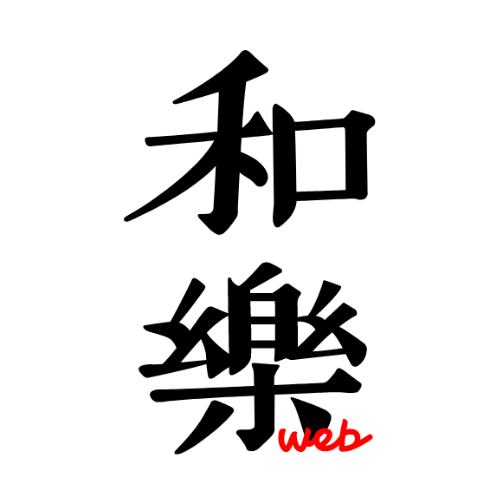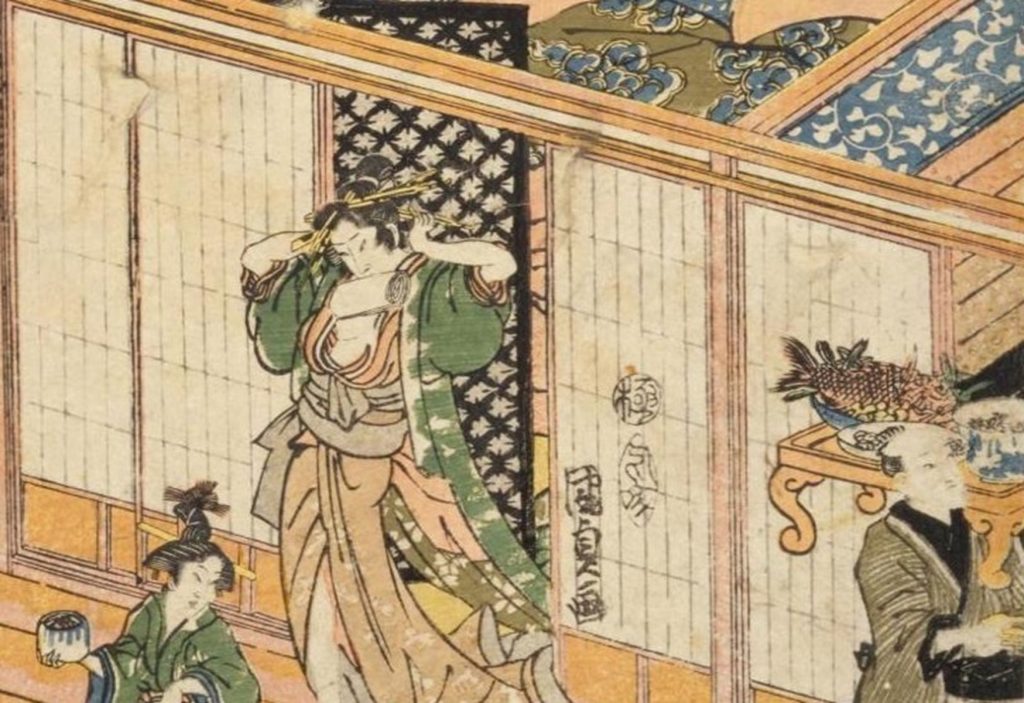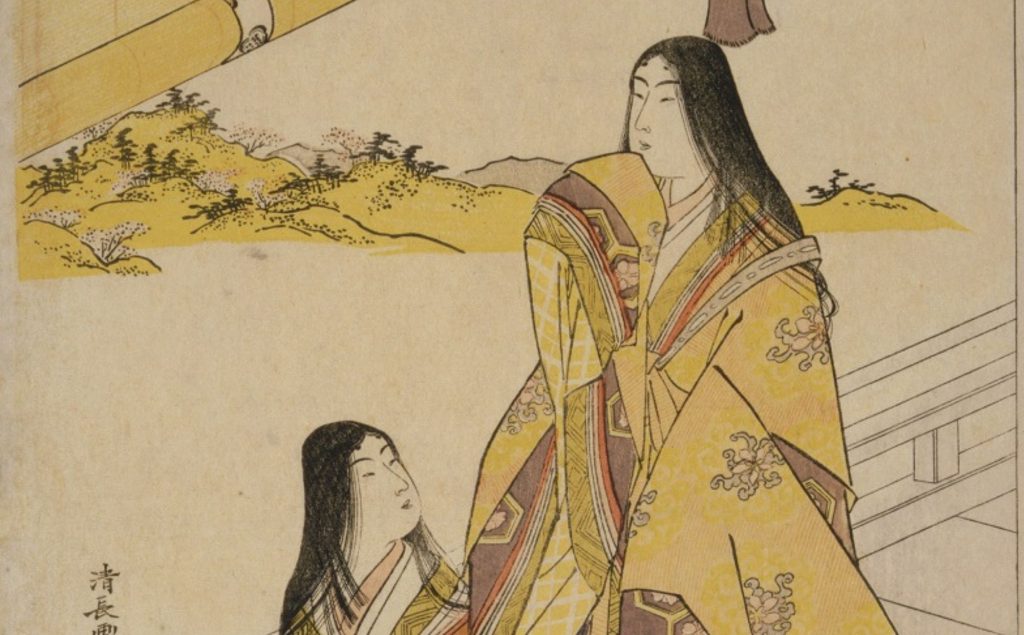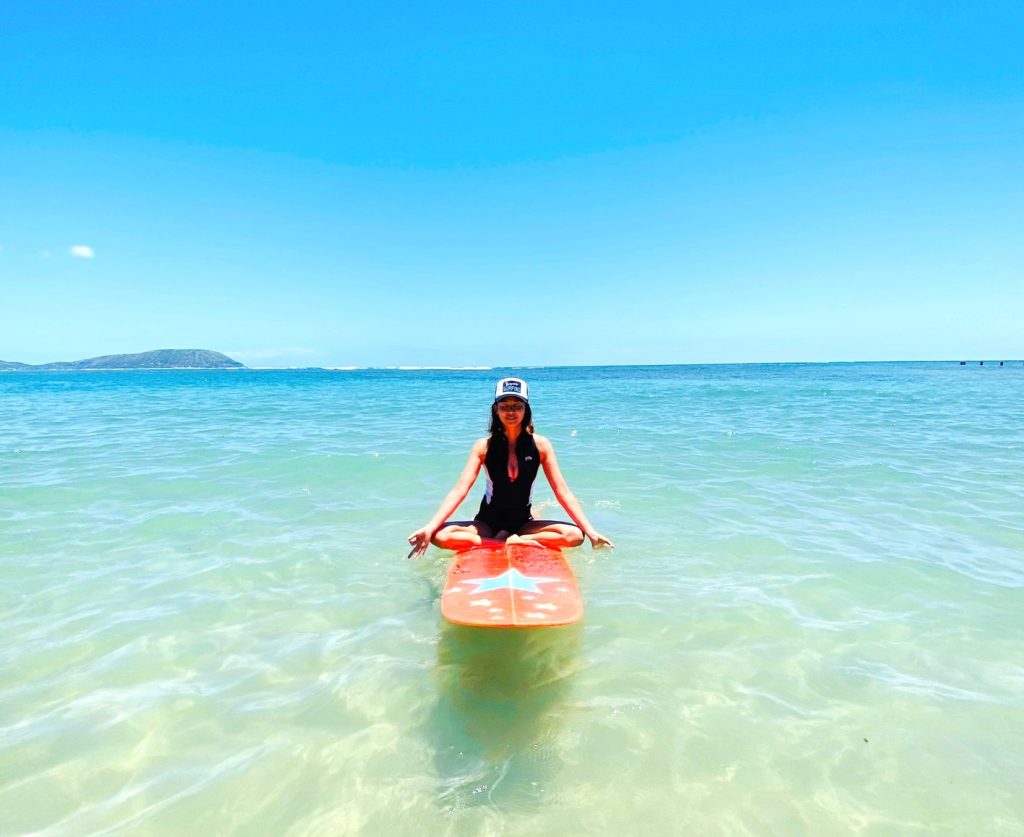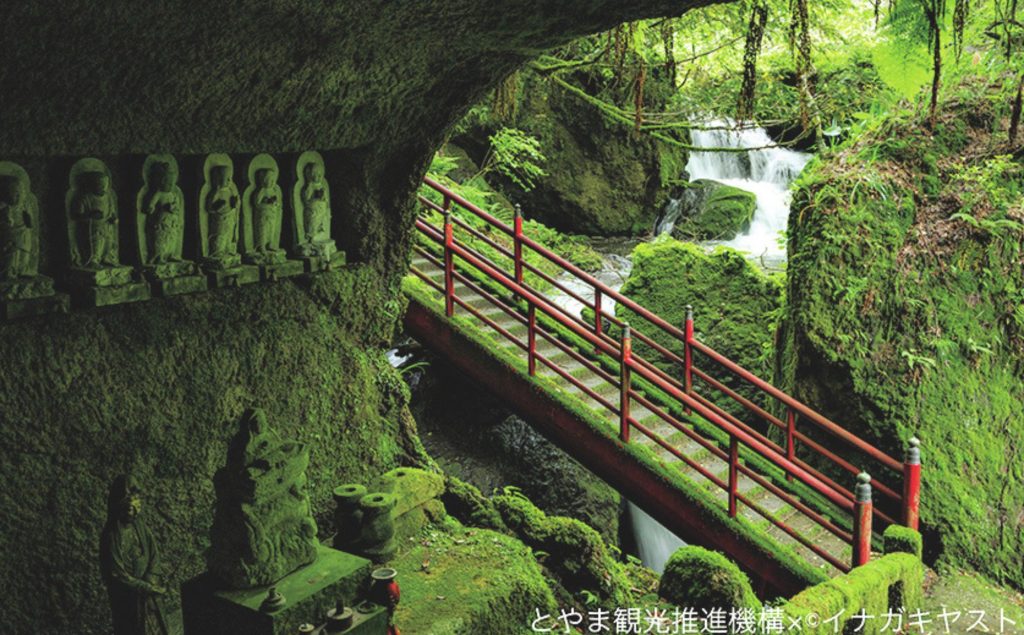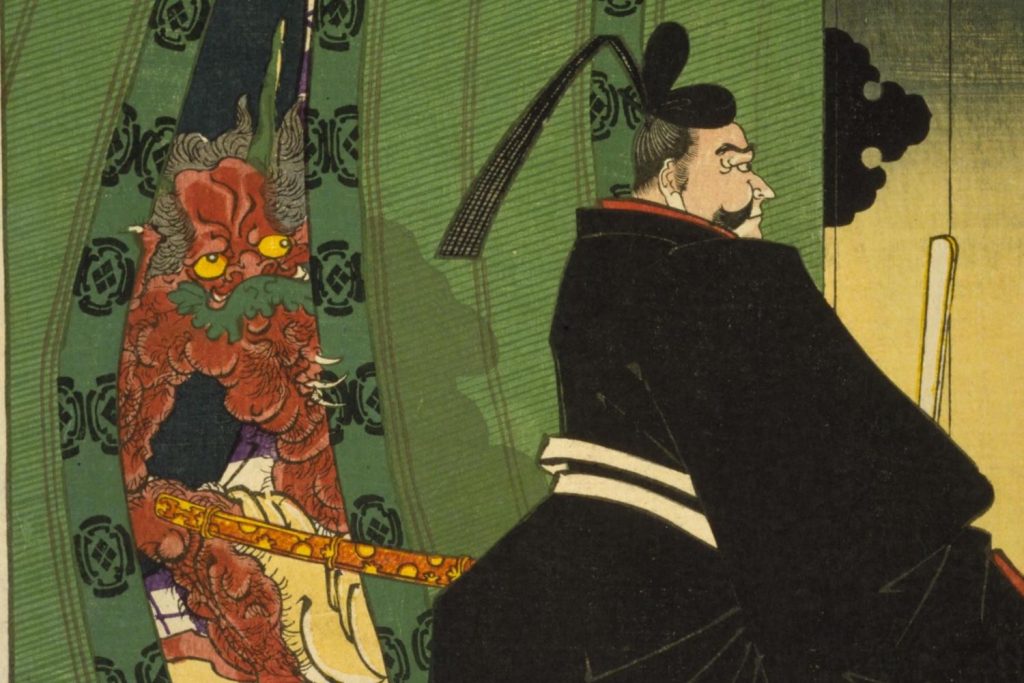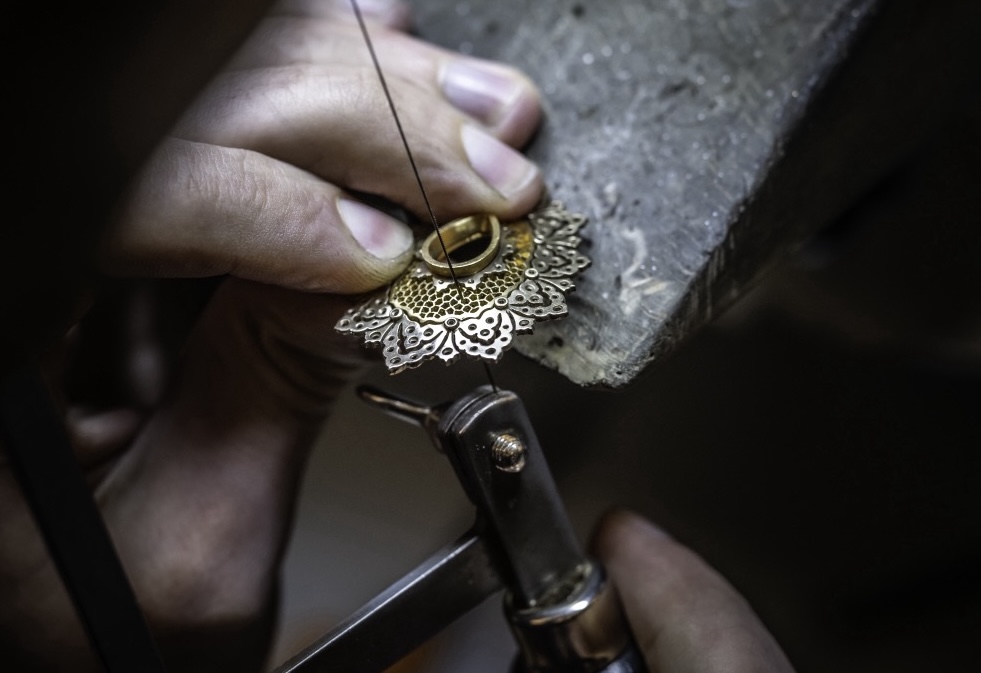In this installment of the “10 Charismatic Painters: An Introduction to Japanese Art” series, we look at Korin Ogata (Ogata Korin), a man who loved and adored decoration. In this issue, we introduce Korin Ogata, along with images of his works.
[Aha! the True History of Japanese Art]
Designs that are still appreciated 300 years later
A large stream placed running through the middle, and on the gold base either side of it, a young and old plum tree with red and white flowers.
The National Treasure “Kohaku baizu Byobu” (MOA Art Museum) is a masterpiece of pictorial expression that Korin reached in his later years. It is a very famous work. Another of Korin’s National Treasure paintings, “Kakitsubata zu Byobu” (Nezu Museum), was painted relatively early in his life, and shows only kakitsubata (iris) repeating on a gold base. after that, with a bridge newly painted in, was “Yatsuhashizu Byobu”.
Both of these paintings are based on natural landscapes, but they create a different space, which is quite different from the image of Japanese art. The reason why these paintings are masterpieces is that they are all beautifully integrated as a single picture. The key to this is the way the motifs are depicted, in a way that they are almost the opposite to realistic. Korin had a genius sense of designing motifs of all kinds, and established his own style of painting while learning from Sotatsu. The motifs that later became known as Korin patterns were inherited by subsequent Rimpa painters and are still used today in a variety of applications, making the Rimpa school famous.
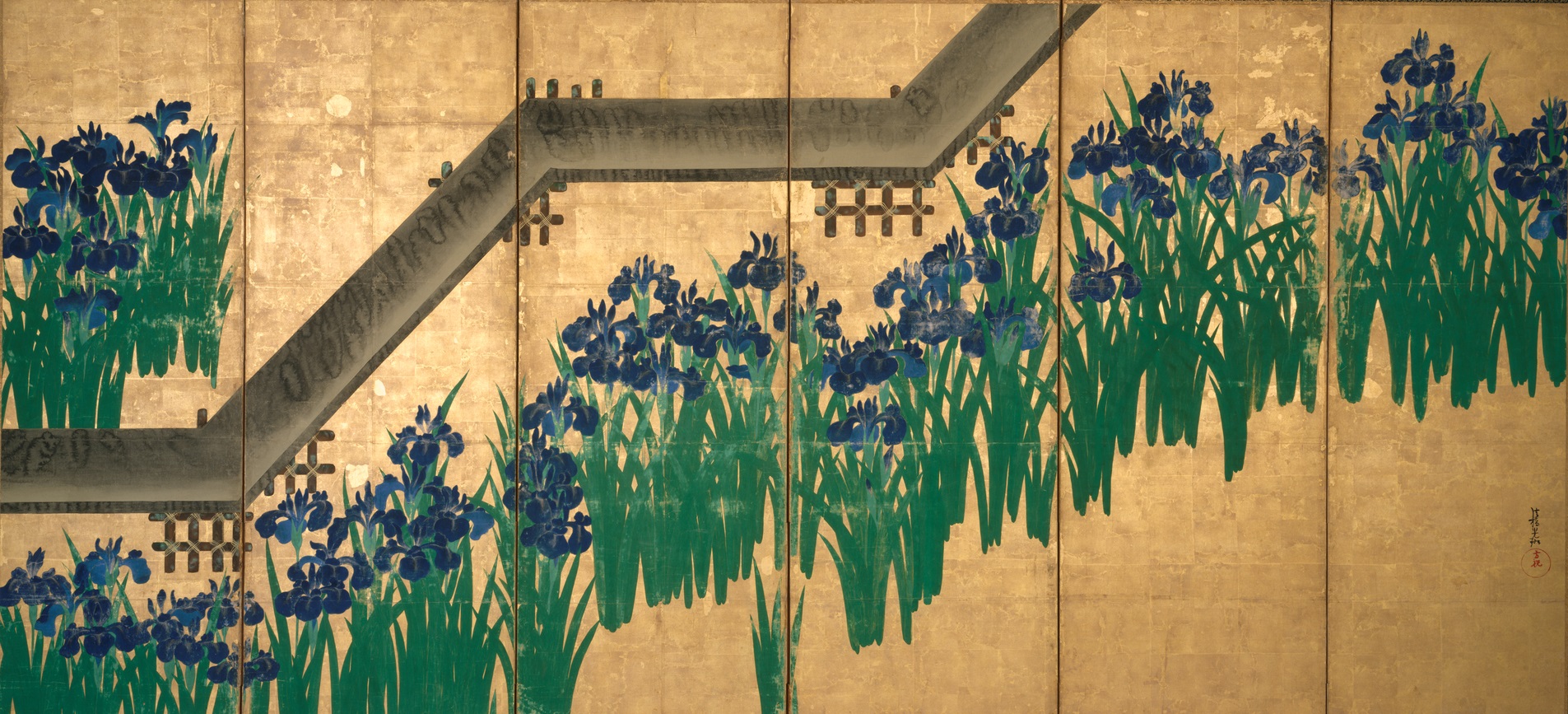
The young artist created a more creative screen by building a bridge over the zigzag motif of the swallow-tail flower motif that he repeatedly used as the subject matter of his paintings.
[Aha! the True History of Japanese Art]
Is this Art Nouveau?
“Art Nouveau”, which was popular in Europe from the end of the 19th century to the beginning of the 20th century, was an art movement characterized by botanical patterns and flowing curved lines, which eventually led to “Japonisme”.
The reason why such a trend emerged can be traced back to the paintings of the Rimpa school. In Europe and the United States, Rimpa was introduced by Sakai Hoitsu’s “Korin Hyakuzu” brought back by Siebold and by Fenollosa, who called Sotatsu, Korin, and other true Japanese impressionists. The natural expression of Korin patterns greatly influenced painters such as Gustav Klimt and Alfons Mucha, and brought a new style to Western painting.
Korin’s innovative sense of design astonished artists not only in Japan but around the world.
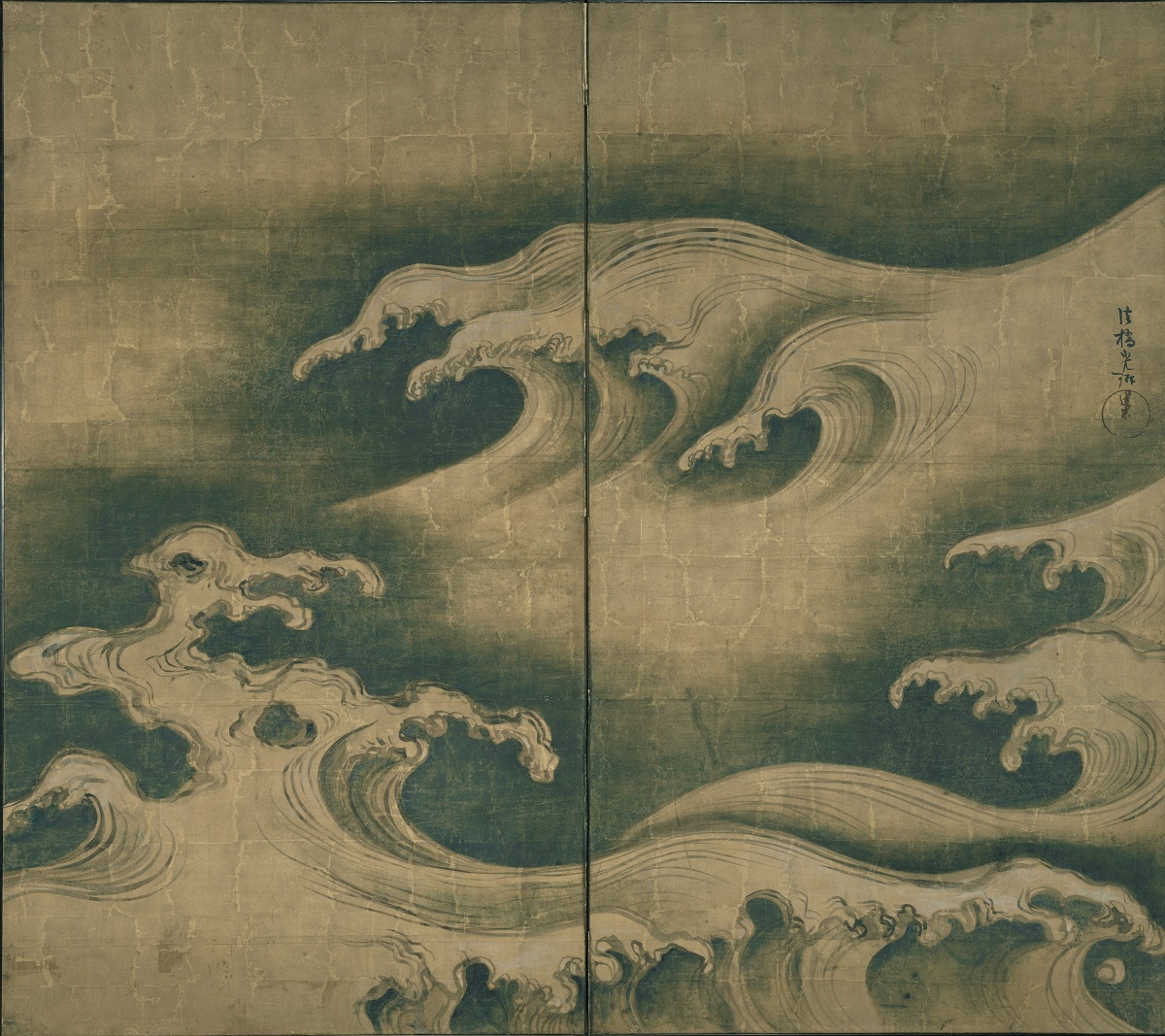
[Aha! the True History of Japanese Art]
The “Rim” in “Rimpa” means “Rim” in “Korin
Although the term “Rimpa” is now commonly understood, it was actually added later. In the Meiji era, Sotatsu, Korin, Ogata Kenzan, Watanabe Shiko, Sakai Hoitsu, Suzuki Kiitsu, Ikeda Koson, and others were called the “Korin school.” When Sotatsu was reevaluated in the Taisho era, it was called the “Sotatsu Korin school,” and the name “Koetsu school” was also seen.
The name “Rimpa” was unified with “Rimpa” in 1972, when the special exhibition “Rimpa” was held to commemorate the 100th anniversary of the founding of Tokyo National Museum. In 2004, the National Museum of Modern Art, Tokyo’s “Rimpa” exhibition introduced Japanese paintings by Hishida Shunso and Yokoyama Taikan, as well as works by Klimt and Andy Warhol, as Rimpa-like. The “Rim” in Korin means “beautiful bead,” and Rimpa was the name given to the tendency of the school of paintings.

Profile of Korin Ogata
Ogata Korin
Painter from 1658 to 1716. He was born as the second son of a kimono merchant in Kyoto called “KARIGANEYA.” Whilst exhausting his wealth on debauchery and being in debt, he inherited the painting techniques he learned from Sotatsu and others. He developed new techniques and made a name for himself as a painter. His outstanding sense of style was demonstrated in a wide range of genres, including ceramics, crafts, and kimono, which he created in collaboration with his younger brother Kenzan.







